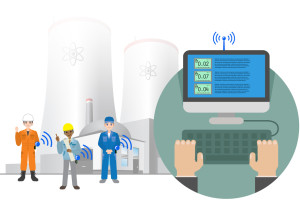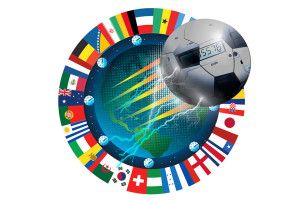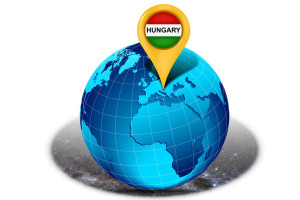Facts, Figures, and Findings from EPRI Research, Reports, and Other Sources

The University of Michigan Investigates a Super-Ductile Concrete That May Make Wind Turbine Towers Taller, More Flexible
What’s the ideal concrete for wind turbine towers? One that is bendable, has 200 times the ductility and double the fatigue resistance of normal concrete, is 30% lighter, and has self-healing abilities. That is what the University of Michigan, with assistance from EPRI, is developing, and it may result in taller turbines and reduced maintenance costs. Because wind speed increases with height, taller turbines can have more output. Conventional concrete cracks when bent or strained excessively, limiting the height of wind turbines. Incorporating ...
Read More
What’s the ideal concrete for wind turbine towers? One that is bendable, has 200 times the ductility and double the fatigue resistance of normal concrete, is 30% lighter, and has self-healing abilities. That is what the University of Michigan, with assistance from EPRI, is developing, and it may result in taller turbines and reduced maintenance costs. Because wind speed increases with height, taller turbines can have more output. Conventional concrete cracks when bent or strained excessively, limiting the height of wind turbines. Incorporating ...
Read More

Korean Nuclear Utility Reduces Worker Radiation Dose by 37%
In demonstrations at two nuclear plants in Korea, a first-of-its-kind system that remotely monitors radiation reduced worker radiation dose by 37%. Korea Hydro & Nuclear Power (KHNP) has been developing the system since 2010, assisted by EPRI researchers and its radiation monitoring guidelines. Traditionally, nuclear plant workers wear personal dosimeters that monitor radiation and require separate devices to transmit data to radiation protection personnel. KHNP’s system integrates lighter personal monitoring devices with wireless communications, enabling radiation protection personnel to track radiation levels in real time. Through continuous video, the protection personnel ...
Read More
In demonstrations at two nuclear plants in Korea, a first-of-its-kind system that remotely monitors radiation reduced worker radiation dose by 37%. Korea Hydro & Nuclear Power (KHNP) has been developing the system since 2010, assisted by EPRI researchers and its radiation monitoring guidelines. Traditionally, nuclear plant workers wear personal dosimeters that monitor radiation and require separate devices to transmit data to radiation protection personnel. KHNP’s system integrates lighter personal monitoring devices with wireless communications, enabling radiation protection personnel to track radiation levels in real time. Through continuous video, the protection personnel ...
Read More

Southern Company Uses EPRI Methodology to Create More Regular, Timely Assessments
Southern Company, in collaboration with EPRI, reduced from seven weeks to one week the time needed to assess and prioritize cybersecurity risks. With the profusion of digital communications, technologies, and devices in electric power systems come many new cybersecurity risks and threats to the power supply. To help utilities assess vulnerabilities and manage risks with available resources, EPRI developed a risk-assessment methodology to identify cybersecurity vulnerabilities with potential grid impacts, prioritize appropriate mitigation activities, and provide management with cybersecurity status. Southern Company has refined and applied the methodology to ...
Read More
Southern Company, in collaboration with EPRI, reduced from seven weeks to one week the time needed to assess and prioritize cybersecurity risks. With the profusion of digital communications, technologies, and devices in electric power systems come many new cybersecurity risks and threats to the power supply. To help utilities assess vulnerabilities and manage risks with available resources, EPRI developed a risk-assessment methodology to identify cybersecurity vulnerabilities with potential grid impacts, prioritize appropriate mitigation activities, and provide management with cybersecurity status. Southern Company has refined and applied the methodology to ...
Read More

Simulator Tool Supports Operations Across the World (and the World Cup)
When Operador Nacional do Sistema Elétrico (ONS) was preparing Brazilian grid operators for potential disruptions during the 2014 World Cup, it relied on an EPRI simulator tool used globally by reliability coordinators, transmission operators, and balancing authorities to replicate the grid’s performance and response to various operating conditions and incidents. A grid operator’s workday can be complicated, even without the added pressure of scattered sports venues and the arrival of tourists by the hundreds of thousands. Events such as load increases, downed power lines, and plant outages require operators ...
Read More
When Operador Nacional do Sistema Elétrico (ONS) was preparing Brazilian grid operators for potential disruptions during the 2014 World Cup, it relied on an EPRI simulator tool used globally by reliability coordinators, transmission operators, and balancing authorities to replicate the grid’s performance and response to various operating conditions and incidents. A grid operator’s workday can be complicated, even without the added pressure of scattered sports venues and the arrival of tourists by the hundreds of thousands. Events such as load increases, downed power lines, and plant outages require operators ...
Read More

The supplier of half of Hungary’s power consumption has joined EPRI’s nuclear research program. In 2013, Paks Nuclear Power Plant’s four units produced 51% of the country’s electricity, according to the Nuclear Energy Agency. Leaders and staff at the 2,000-megawatt facility now will have access to a global R&D collaboration and key EPRI guidance to support safe, reliable operations. Paks’ collaboration with EPRI will provide nuclear plant operators around the world with new opportunities to draw on plant technical knowledge spanning more than three decades of operation. The Russian-designed VVER 440 nuclear reactors at Paks are also deployed in other ...
Read More
Read More

